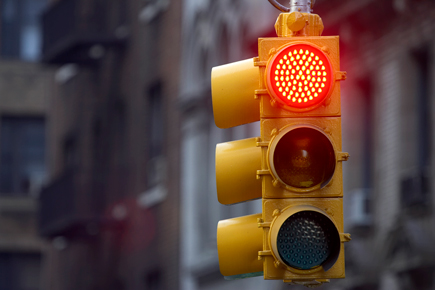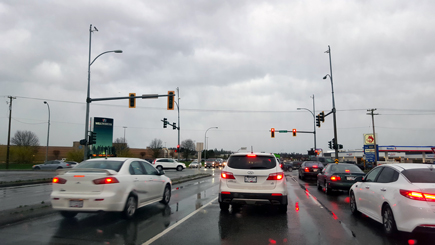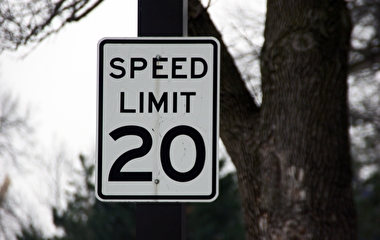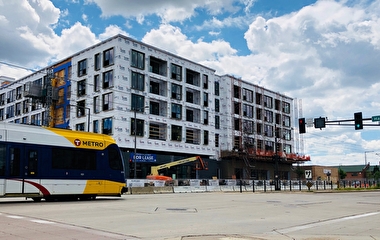Red-light running is one of the most common and dangerous causes of crashes at signalized intersections. Now, new technology and methodologies developed at the U of M could provide traffic engineers with a low-cost, easy-to-use toolbox for identifying intersections prone to red-light running long before crash data are available.
“Engineers traditionally measure an intersection’s safety using the number of crashes that actually occur there, but because collisions are rare and somewhat random events, it can take a long time to collect enough data to assess a single location’s safety,” says Gary Davis, a professor in the Department of Civil, Environmental, and Geo- Engineering and the project’s principal investigator. “If we can accurately measure traffic conflicts—close calls in which a driver must stop suddenly or swerve to avoid a crash—we can begin to determine where dangerous crashes are most likely to occur.”
While not every red-light-running event leads to a collision, it is often the first step in a process that ends in one. In addition, crashes caused when drivers run red lights are typically right-angle crashes, which are frequently severe. About 45 percent of right-angle collisions result in injury compared to about 25 percent of other crash types. As a result, reducing the frequency of right-angle crashes can significantly improve overall road safety and reduce crash-related costs.
To address this need, researchers at the U of M and the University of Michigan set out to determine whether it was possible to objectively and automatically identify intersections where red-light running is most likely to occur. Several previous U of M research projects (led by Professor Henry Liu, now with Michigan) had developed the SMART Signal system—an automatic system that collects data from traffic signal controllers. The Minnesota Department of Transportation (MnDOT) has installed the system at more than 100 intersections in the Twin Cities.
In this latest MnDOT-sponsored project, researchers developed tools that use SMART Signal data to evaluate safety performance at intersections. Liu’s team at the University of Michigan used the SMART Signal data to estimate both red-light-running events and right-angle crossing conflicts. Because most intersections are not equipped to detect red-light running, researchers found a way to pair vehicle-speed and traffic-volume data with traffic-signal-phase information from SMART Signal to identify potential red-light-running events.
To verify the accuracy of this method, they compared the potential events with data from actual red-light-running events and then developed a formula to predict whether a red-light-running event would occur. Next, researchers designed a method to determine whether a red-light-running event would lead to a traffic conflict and added this new measure—crossing conflict—to a more standard model using average daily traffic.
Finally, researchers at the U of M tested the new model to see if it could improve their ability to predict right-angle crashes at signalized intersections. “We found the frequency of red-light running was a better predictor of angle-crash frequency than the more traditional average daily traffic,” Davis says.
The new methodology could help MnDOT prioritize intersections for safety improvements and improve signal operations, says Steve Misgen, MnDOT Metro District traffic engineer.




